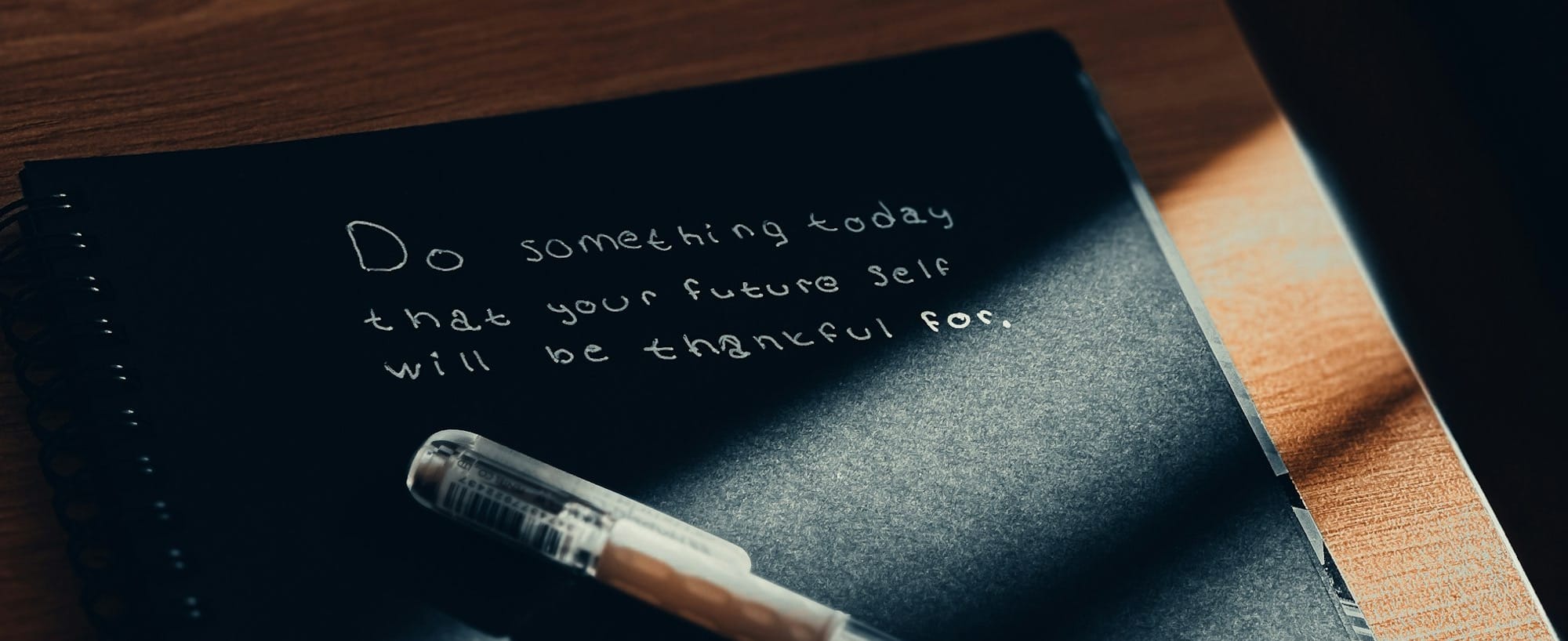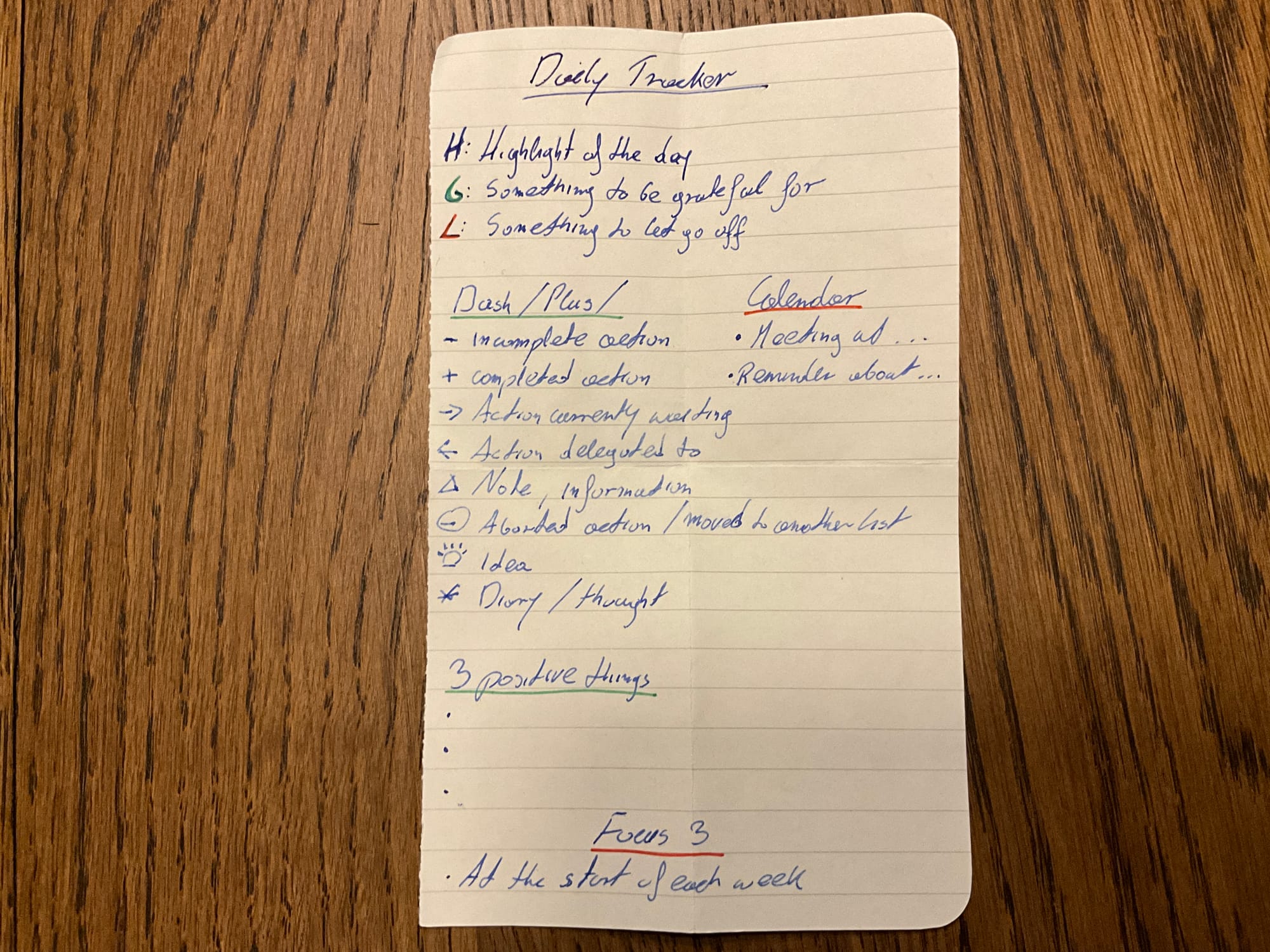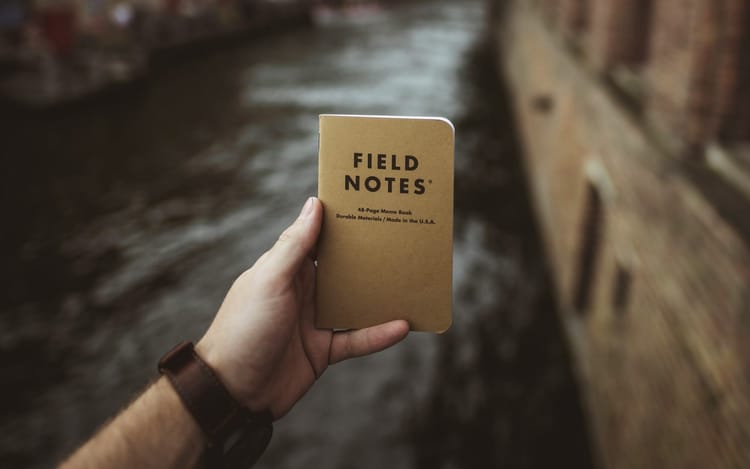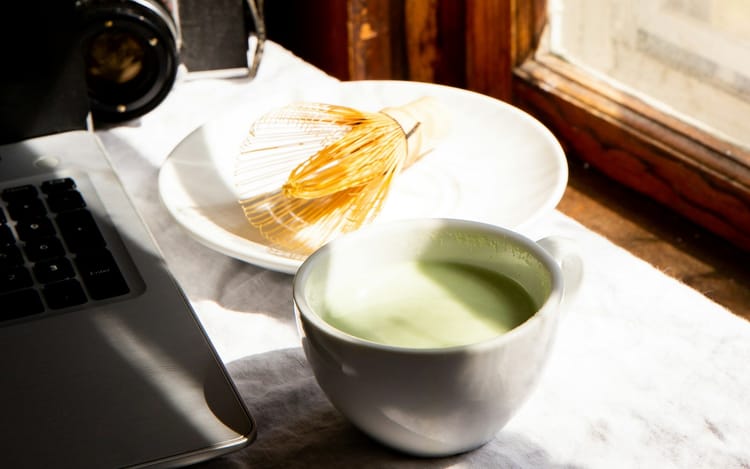Your brain’s hard drive is full: Start a journal.

We juggle tasks, messages, notifications, emails, Slack pings, and half-finished conversations, all while trying to remember the things we swore we’d “get back to later.” In today’s digital age, we’re constantly bombarded with information. Remote work only amplifies it: calendar events stack up, customer calls blend into internal meetings, and somehow you still have to find time to do your actual work.
That constant mental overload, knowing you should be doing something, but not knowing what to tackle next, breeds anxiety. The hesitation to act only fuels stress, and left unchecked, it’s an easy road to burnout.
Journaling helps stop that spiral. Writing things down offloads mental clutter, clears working memory, and gives structure to thoughts and goals so they feel actionable. In short, journaling is like freeing up space on your brain’s hard drive. (Or, if you’re old enough to remember, it’s the mental equivalent of running a disk defragmentation on Windows.)
And it’s not just a nice idea, there’s research behind it. Studies suggest that over 80% of people report benefits from even brief writing sessions. Tracking your progress makes you 42% more likely to hit your goals. Putting pen to paper has been linked to a 33% boost in productivity and even a 50% improvement in memory. Most importantly, journaling has been shown to reduce anxiety and stress, making it one of the simplest mental health tools available.
If you’ve ever felt scattered, restless, or stuck in your head, journaling might be the reset button your mind has been looking for.

How do you actually start?
The good news is you don’t need to write pages and pages or pour out your deepest secrets on day one. The key is to keep it simple and approachable so it becomes a habit rather than a chore.
The One-line-a-day Journal
This method focuses on writing just one sentence per day summarizing your mood, a highlight, or something memorable. It is easy because it doesn’t put a lot of pressure on you to write pages and pages to feel like you’re doing any “meaningful” journaling. Instead, you write just one sentence per day, and that’s it. Everybody has time to do it, and after a while, it becomes a habit.
This method and others are about making it as accessible as possible to develop a habit without feeling overwhelmed.
Gratitude Journaling
List 3–5 things you’re grateful for every day. It doesn’t need to be big things; it can be smaller things like:
- “I had an amazing coffee/tea in the morning”
- “I did a workout/went for a 10-min walk after a long day”
- “I sat down to write a blog even if it is 11 p.m. and I have lots of work tomorrow”
This helps improve mood and shift focus to the positives around you, which helps reduce anxiety. When I started many years ago, I noticed the change after 2–3 weeks of daily gratitude journaling. It does shift your perspective, even if it sometimes feels a bit weird. And it is okay to repeat some things over and over again. This is a sign that a particular event, thought, or feeling is truly important to you, and maybe it is a signal to you to do more about it.
To-Dos
It is as simple as jotting down what you must do on a particular day or week. It helps with memory, as you try to complete the to-dos and see which ones may be important.
There’s nothing like marking a task as completed in a pen on your paper. I know you can tap a screen on your phone to mark something as done in your favorite to-do app, which most likely requires a subscription…but it’s not the same as physically crossing something off as done. Try it; you will not want to go back.
Morning Pages / Brain Dump
Morning Pages were popularized by Julia Cameron’s “The Artist's Way.” They involve writing as many pages as you want of unfiltered thoughts first thing in the morning. This is best for clearing mental clutter, sparking creativity, and reducing overthinking. There are no rules around this; it is just to vomit your thoughts onto the paper so your mind isn’t cluttered.
The Brain Dump Method is similar. The only difference is that you set a timer for however long you want (10–15 minutes) and write down whatever comes to mind: tasks, worries, random thoughts, doodles, feelings. All of that without worrying about grammar or structure. No rules, no prompts, just clearing mental clutter.
This is all to help reduce anxiety, organize scattered thoughts, and end the day with a clear mind so you can sleep better.
The Daily Compass Method

The Daily Compass Method is a hybrid journaling and productivity system that helped me organize tasks, track progress, and reflect on my day. It uses simple symbols and categories to keep entries concise, balancing action planning and mindfulness. I don’t know where I stumbled upon this, but I evolved it to my own needs and combined different parts of different systems, the ones I showed above, into one. The name is the one I came up with myself.
Daily Highlights and Gratitude
At the start (or end) of each day, note:
- H (Highlight of the day): One positive or memorable moment from your day.
- G (Gratitude): Something you are thankful for.
- L (Let go): Something to release—whether it’s a worry, frustration, or lingering stress.
Task Management (Extended Dash/Plus System)
Use shorthand symbols to track tasks efficiently:
–Incomplete action+Completed action→Action currently in progress←Action delayed or postponed△Note or important information⊖Abandoned action (or moved to another list)💡Idea: Quickly jot down creative sparks or concepts to revisit later.✱Diary/Thought: Use this for short reflective entries, personal thoughts, or emotional check-ins.
This keeps tasks actionable and visible without overwhelming long-form writing.
Calendar & Scheduling
In a separate section:
●Meeting at… (log appointments)○Reminder about… (future tasks or follow-ups)
This helps integrate your journal with your schedule.
Positive Reinforcement
Include a section called “3 Positive Things” at the end of each day:
- List three uplifting or meaningful moments.
This encourages positive psychology and helps reframe your day constructively.
Weekly Focus
At the beginning of each week, define a “Focus 3”:
- Write down three key priorities or goals for the week.
These serve as anchors to keep your journal (and mind) aligned with what matters most.
This is how it looks on paper!

Quick Summary table with all the methods explained from the article
| Journaling Method | Summary / Description |
|---|---|
| One-line-a-day Journal | Write just one sentence per day to summarize your mood, a highlight, or something memorable. Extremely simple, making it easy to build the habit. |
| Gratitude Journaling | List 3–5 things you’re grateful for daily, big or small. Helps shift focus to positives, improves mood, and reduces anxiety. |
| To-Dos | Jot down tasks you need to do for the day or week. Physically crossing off tasks is satisfying and boosts motivation and memory. |
| Morning Pages / Brain Dump | Write several pages (or for a set time) of unfiltered thoughts, especially first thing in the morning. Clears mental clutter, sparks creativity, and reduces overthinking. No rules or prompts. |
| The Daily Compass Method | Hybrid system using symbols for task management (+, –, →, ←, △, ⊖, 💡, ✱), with daily highlights, gratitude, letting go, positive reinforcement (“3 Positive Things”), calendar integration, and weekly focus (“Focus 3” goals). Blends action planning with mindfulness and reflection. |
Final Thoughts
One thing I want to make clear is that there’s no single perfect journaling method. Feel free to take everything I said here and adjust it to your own needs. That is what I did, and it felt even more personal after a while. I knew I had something that worked for me.
The one thing, however, is to give it a shot. Without trying, how are you gonna know which one fits your style best?
There are many other journaling methods, such as Commonplace Book (I’m trying that myself now), Prompt-based journaling, reflection journaling, habit trackers, and bullet journaling.
I will dive into each method I’m familiar with later on this blog, but I hope this is enough to get you started. I do hope you get started and see the benefits yourself.
See you soon!




